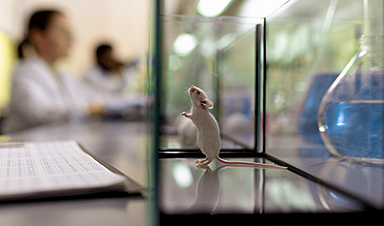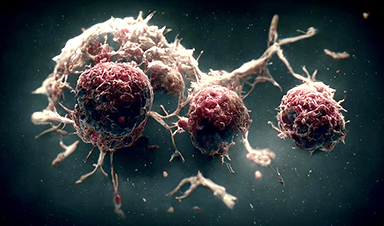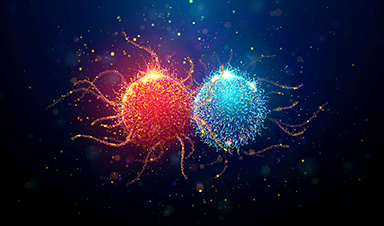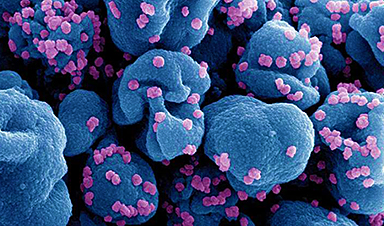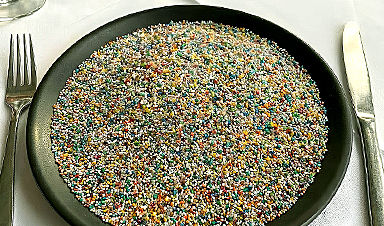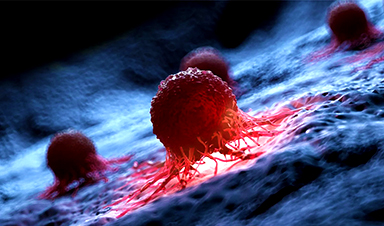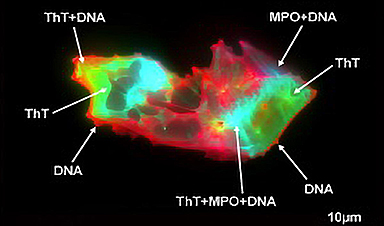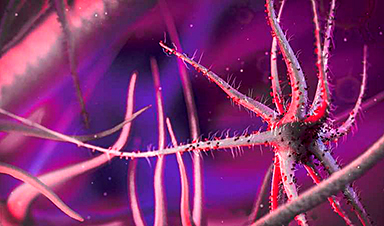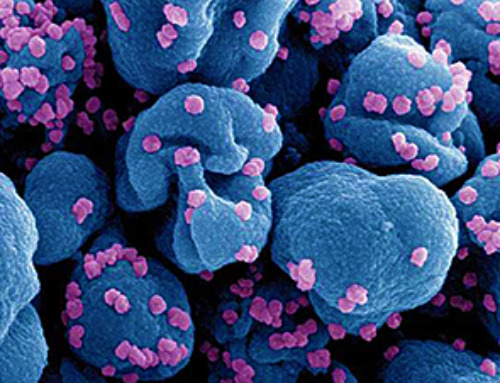
Researchers at Karolinska Institutet have developed a technique that enables efficient delivery of therapeutic proteins and RNA to cells. The method, published in Nature Communications, shows promising results in animal studies to deliver gene editors and protein therapeutics.
The method is based on so-called extracellular vesicles (EVs), tiny bubbles that are naturally secreted by cells and can transport biologically active molecules between cells. Researchers have now succeeded in improving these bubbles by introducing two key components: a small part of a bacterial protein called intein and a so-called fusogenic protein from a virus.
The fusogenic protein helps the bubbles to fuse with the endosomal membrane and release their contents into the cell, while the intein can cut itself and thus help release therapeutic proteins inside the cell.
“This innovative engineering strategy represents a major step forward for extracellular vesicle technology, effectively overcoming key barriers such as poor endosomal escape and limited intracellular release,” says Professor Samir EL Andaloussi, last author of the study and researcher at the Department of Laboratory Medicine.
“Our in vivo findings highlight the potential of engineered EVs as a versatile platform for delivering therapeutics to treat a broad range of conditions, including systemic inflammation, genetic diseases, and neurological disorders.”
The study’s first author, Dr. Xiuming Liang at the Department of Laboratory Medicine, adds, “By improving the efficiency and reliability of therapeutic delivery into target cells, this technology could significantly broaden the application of advanced medicines.”
Brain changes in mice
In experiments on cells and live animals, the researchers were able to efficiently deliver Cre recombinase, a protein that can cut and paste DNA, and Cas9/sgRNA complexes, which are used to edit genes. When extracellular vesicles loaded with Cre recombinase were injected into the brains of mice, a significant change in cells in the hippocampus and cortex brain structures was observed.
“This gives hope to use the CRISPR/Cas9 gene scissors or similar tools to treat severe genetic diseases of the central nervous system, such as Huntington’s disease and spinal muscular atrophy,” says Liang.
The researchers also demonstrated that the technique could be used to treat systemic inflammation in mice.
More information: Xiuming Liang et al, Engineering of extracellular vesicles for efficient intracellular delivery of multimodal therapeutics including genome editors, Nature Communications (2025). DOI: 10.1038/s41467-025-59377-y. www.nature.com/articles/s41467-025-59377-y
Journal information: Nature Communications
News
Scientists Melt Cancer’s Hidden “Power Hubs” and Stop Tumor Growth
Researchers discovered that in a rare kidney cancer, RNA builds droplet-like hubs that act as growth control centers inside tumor cells. By engineering a molecular switch to dissolve these hubs, they were able to halt cancer [...]
Platelet-inspired nanoparticles could improve treatment of inflammatory diseases
Scientists have developed platelet-inspired nanoparticles that deliver anti-inflammatory drugs directly to brain-computer interface implants, doubling their effectiveness. Scientists have found a way to improve the performance of brain-computer interface (BCI) electrodes by delivering anti-inflammatory drugs directly [...]
After 150 years, a new chapter in cancer therapy is finally beginning
For decades, researchers have been looking for ways to destroy cancer cells in a targeted manner without further weakening the body. But for many patients whose immune system is severely impaired by chemotherapy or radiation, [...]
Older chemical libraries show promise for fighting resistant strains of COVID-19 virus
SARS‑CoV‑2, the virus that causes COVID-19, continues to mutate, with some newer strains becoming less responsive to current antiviral treatments like Paxlovid. Now, University of California San Diego scientists and an international team of [...]
Lower doses of immunotherapy for skin cancer give better results, study suggests
According to a new study, lower doses of approved immunotherapy for malignant melanoma can give better results against tumors, while reducing side effects. This is reported by researchers at Karolinska Institutet in the Journal of the National [...]
Researchers highlight five pathways through which microplastics can harm the brain
Microplastics could be fueling neurodegenerative diseases like Alzheimer's and Parkinson's, with a new study highlighting five ways microplastics can trigger inflammation and damage in the brain. More than 57 million people live with dementia, [...]
Tiny Metal Nanodots Obliterate Cancer Cells While Largely Sparing Healthy Tissue
Scientists have developed tiny metal-oxide particles that push cancer cells past their stress limits while sparing healthy tissue. An international team led by RMIT University has developed tiny particles called nanodots, crafted from a metallic compound, [...]
Gold Nanoclusters Could Supercharge Quantum Computers
Researchers found that gold “super atoms” can behave like the atoms in top-tier quantum systems—only far easier to scale. These tiny clusters can be customized at the molecular level, offering a powerful, tunable foundation [...]
A single shot of HPV vaccine may be enough to fight cervical cancer, study finds
WASHINGTON -- A single HPV vaccination appears just as effective as two doses at preventing the viral infection that causes cervical cancer, researchers reported Wednesday. HPV, or human papillomavirus, is very common and spread [...]
New technique overcomes technological barrier in 3D brain imaging
Scientists at the Swiss Light Source SLS have succeeded in mapping a piece of brain tissue in 3D at unprecedented resolution using X-rays, non-destructively. The breakthrough overcomes a long-standing technological barrier that had limited [...]
Scientists Uncover Hidden Blood Pattern in Long COVID
Researchers found persistent microclot and NET structures in Long COVID blood that may explain long-lasting symptoms. Researchers examining Long COVID have identified a structural connection between circulating microclots and neutrophil extracellular traps (NETs). The [...]
This Cellular Trick Helps Cancer Spread, but Could Also Stop It
Groups of normal cbiells can sense far into their surroundings, helping explain cancer cell migration. Understanding this ability could lead to new ways to limit tumor spread. The tale of the princess and the [...]
New mRNA therapy targets drug-resistant pneumonia
Bacteria that multiply on surfaces are a major headache in health care when they gain a foothold on, for example, implants or in catheters. Researchers at Chalmers University of Technology in Sweden have found [...]
Current Heart Health Guidelines Are Failing To Catch a Deadly Genetic Killer
New research reveals that standard screening misses most people with a common inherited cholesterol disorder. A Mayo Clinic study reports that current genetic screening guidelines overlook most people who have familial hypercholesterolemia, an inherited disorder that [...]
Scientists Identify the Evolutionary “Purpose” of Consciousness
Summary: Researchers at Ruhr University Bochum explore why consciousness evolved and why different species developed it in distinct ways. By comparing humans with birds, they show that complex awareness may arise through different neural architectures yet [...]
Novel mRNA therapy curbs antibiotic-resistant infections in preclinical lung models
Researchers at the Icahn School of Medicine at Mount Sinai and collaborators have reported early success with a novel mRNA-based therapy designed to combat antibiotic-resistant bacteria. The findings, published in Nature Biotechnology, show that in [...]
